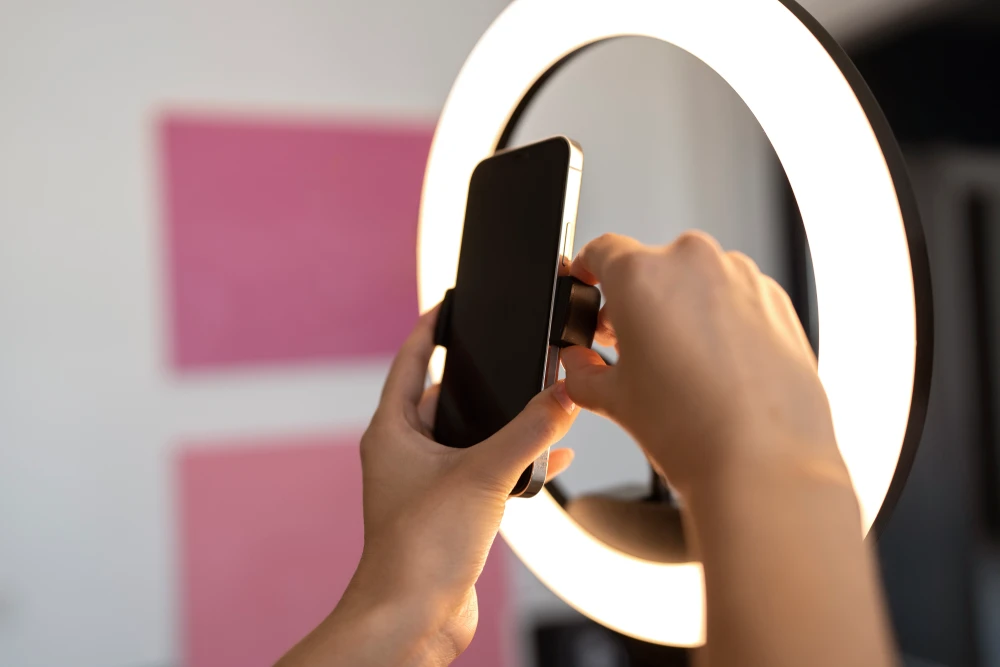If you’re looking for a new way to engage your audiences and turn them into buyers, consider hosting your first livestream shopping event.
Livestream shopping in the US is predicted to reach $20 billion in 2022, up from $6 billion in 2020. According to Statista, the audience for live video content is expected to increase to 164.6 million viewers by 2024. That’s a massive figure!
Then what’s the point of waiting?
The power of live selling helps companies, e-tailers, and creators grow their communities. But now you might wonder where to begin. Check out the article to understand how to start your first Livestream Shopping event.
What is live stream shopping?
Live shopping allows eCommerce business owners and marketers to promote their products. It also enables shoppers to buy those products in real-time.
Overall, it’s a really interesting experience. That goes much beyond just clicking and adding items to a shopping basket.
What’s more?
Just like Instagram Live, customers can ask questions and make comments. The seller may display reviews and recommendations to help visitors decide. A good way to think about live shopping is to reframe our use of social media.
Besides liking a product, you can buy it right away.
What’s the point of a live streaming event?
You can launch livestream events for a variety of reasons. Live shopping events raise brand awareness or foster a community. It’s a great way to generate more money for your business.
You can:
- Expand your reach
- Increase participation
- Learn about your audience
- Make connection with your customers
- Share the moments globally
So, how are you going to do it? Keep reading to find your answer and a perfect strategy.
How to set up your first Livestream shopping event
1. Discover if Livestream shopping is the right choice for you
Is there anything you’ve got that would look good on video? Have you ever had a customer call and ask for a FaceTime session to see the stock? Can you set up a display to talk about your products?
It’s safe to say that you answered “Yes” to the questions above.
These days, almost any business can create a live-streaming shopping channel. Think of Livestream shopping as a way to communicate directly with your customers.
As we’ve done during pandemic shutdowns
Live streaming exploded in 2019 and 2020, with around 57% of marketers using it. Not without reason.
Your brand gets noticed, you get even more customers, and your business grows.
Now you’ve got an idea about how you can initiate the task. But be sure you have the right equipment and perfect room before selling via Livestream.
2. Broadcast room setup
If you’re getting ready for your first livestream shopping event, take these steps:
- Decide the live broadcast’s goal and target audience. This will help you determine what equipment and technologies you need.
- Determine the location of the live broadcast. It should be calm, well-lit, and have a constant Internet connection. Make sure everything is set up and connected correctly.
- Also, ensure you know what live video-selling features or software you’ll use. It could include setting up an account and learning how to use the tools.
- Prep the live broadcast’s format and content. Plan a timetable, prepare slides or materials, and practice delivering the content.
- Post information about the live broadcast on social media, contact subscribers or market the event. Let your viewers know about the live broadcast.
These steps will help you set up a live broadcast room and be ready to go live.
3. Take it slow and study different scenarios
Do you know what’s going to be the most important thing?
Find scenarios that work for you and stick to them.
It’s good to experiment to find what works best for you. Make sure you have access to something that lets you experiment with many things. You want to set up, train, manage, and repeat the process. And all without having to devote too much time to it.
Try a few small events and see what works and what doesn’t. Remember that your live event is all about connecting with your customers. So it’s better not to mess with buttons and settings too much during the event.
Think outside the box, like what you demonstrate, how you present, or the hosts you use. Try different times of the day or days of the week when you run an event. Inviting people to your live events can also be a good strategy if you have a diverse audience.
Finally, experiment with different offers, prices, and incentives during the live event. By doing this, you’ll see if it changes the number of sales. Always get feedback from your audience, whether it’s live or after.
Spend some time looking at this data. After a few runs, you’ll start seeing patterns.
In light of that, don’t spend too much time building an audience or publicizing an event. As if you are doing A/B tests.
Put on practice, dress rehearsals, or invite someone new to see your event.
4. Make it fun and engaging
Now that you have found the best scenarios, it’s time to focus on content and aesthetics.
Here’s my advice: Try building your own voice, pace, and set up for your first Livestream shopping event. It’s like how you built your brand.
You know your customers. So be yourself and show it on those tiny screens everyone will see.
You or your host will most likely be doing most of the talking. So, you can’t ignore the content.
It’s important to increase sales with live streaming. But be careful not to oversell. Plus, you won’t know if they’re listening since they may not respond right away.
I suggest that you don’t rush.
Allow the audience to ask questions during the session and answer them as they come in. Stay focused on the camera. Try to avoid blank screens.
You can also show a distant audience a close-up view of the items. Describe important features, model goods, and give a demo. This is similar to how customers would experience the product in your store.
Having a co-host may also be enjoyable. For example, having two or more hosts chat during a live event makes everything go smoother.
Look for co-hosts who have great chemistry. Then, let the audience participate in the conversation.
Read Also: Livestream Shopping Event: 10 Tips for Adding Fun and Engagement
5. Make sure the audience can buy the products
I don’t think many retailers think about this. But what good is a Livestream session if the audience can’t figure out how to purchase the highlighted product?
Online transactions have a golden rule:
If you click twice to buy something online, 10% of potential buyers will leave. It’s pretty scary.
Now it’s time to think about how your Livestream audience will buy what you’re selling. We see many Livestream shopping channels that link to the brand’s eCommerce site. That may be a decent beginning point, but it may not be ideal. In other words, you have now diverted their attention away from the Livestream session. Instead, you make them buy on your website.
There’s also a chance they won’t return. It’s also possible that they will never return to Livestream. So you’ll miss out on any more products they buy.
Would that work if you live-streamed from your physical store and sent the orders online? That’ll demotivate the merchants hosting the live streams since they won’t get paid.
So I’d recommend integrating the product purchase button and checkout flow into the Livestream. In this way, you offer your customers a more seamless shopping experience.
You should also ensure that checkout is seamless. Your customers can purchase in just a few clicks by leveraging a payment wallet. Thus, your customers don’t want to fill out their credit card and shipping info over the phone.
6. Add a Livestream Shopping App to your Website.
The market is full of live-streaming options. These can be found on platforms like Facebook, Instagram, and Tiktok, as well as in products like Arvia. Your website needs live broadcasts.
You get more traffic, familiarize your clients with your brand, and so on. Arvia is easy to integrate. You can either broadcast live vertically or horizontally.
While the show is live, you can quickly add items from your website. Customers can add items to their basket and complete the transaction without leaving the magazine.
You can give out broadcast coupons as well.
Using the Arvia Livestream Shopping, you can improve your customer engagement. Arvia recommends doing live broadcasts on all channels, including your website. Let people know about your website on social media.
7. Decide whether to use vertical or horizontal camera aspects.
As an avid social media user, watching vertical videos is natural and easy for me. The orientation of our mobile devices has made vertical filming second nature.
You’re targeting a sluggish audience.
Suppose you’re anything like me. It takes power to move my phone’s screen horizontally.
In reality…
94% of smartphone users hold their phones vertically.
So here’s what happened…
Vertical videos are more likely to be watched. Less than 30% of users tilt their phones sideways to see ads. People who do turn their phones sideways only watch roughly 14% of the video.
Arvia supports both landscape and portrait orientations. But I strongly recommend going vertical.
When planning your video, consider your website visitors. Do most of your visitors come from mobile devices?
You’ll know whether to shoot horizontally or vertically based on this.
Livestream Shopping Theme and Product Selection
Make your Livestream shopping event memorable after you’ve picked your theme. First, choose something relevant to your audience that they can relate to. Then, make bespoke pieces for the event by collaborating with local artists or designers.
It won’t just bring people together. But also provide them with something really cool that they can’t get anywhere else!
Selecting the right product is key.
You’ll get more conversions by planning your fisrt livestream shopping event around your theme. But don’t overthink it.
Pick something that makes sense!
It always works well to pick a theme. By doing this, you can put together clothes that match your concept so that customers can buy them easily.
Here’s what I’m thinking. It’s easy.
- Holiday parties, such as Christmas, New Year’s Eve, and Valentine’s Day.
- Spring/Summer – Memorial Day weekend, 4th of July weekend, and so on.
- Autumn – Labor Day and Halloween weekends
Conclusion: First Livestream Shopping Event
It’s all very exciting stuff with amazing potential. The “live” element allows viewers to engage better with the event. Overall, it’s not just about selling items to people. It’s about creating a community around them.
But, of course. The success of your first Livestream shopping event will hinge on one key factor – your audience. You only need to go out there, get in front of the camera, and start talking.
Then people will see you. They’ll hear you. They’ll want to know more. Then, following that, they’ll check out your products. And when they do that, they might take a chance and purchase. And then, pretty soon, you’ll be able to say that streaming isn’t just another tool—it’s become a thriving part of your business.
You’ll need to ensure that the people watching are interested in getting the most out of your live shopping event. Otherwise, they’ll be tuning out, and you’ll find that your event doesn’t go according to plan.
Image by Freepik








